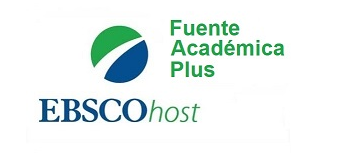Component analysis and landscape valuation: Llanganates National Park, Píllaro, Ecuador
DOI:
https://doi.org/10.17981/mod.arq.cuc.29.1.2022.05Keywords:
biophysical, visual and anthropic components, national parks cultural legacyAbstract
Ecuador, a privileged Latin American country recognized for its abundant natural resources and its rich cultural heritage, located in the four natural regions: Coast, Sierra, Oriente and the Insular Region. In this sense, according to the Ministry of the Environment, eleven territories met the requirements to achieve the denomination of National Parks; Llanganates was incorporated in 1996. The objective of this work was the landscape analysis by surveying the natural, anthropic and cultural elements of the Llanganates National Park; the applied methodology was based on a multidisciplinary model, through exploratory, descriptive and explanatory research, the qualitative approach linked to the assessment of landscape components. In addition, the intangible resources constituted by rich legends that emerged with the Spanish conquest, such as the capture and murder in Cajamarca of the Inca Atahualpa, transferred to Quito, and later buried according to expert historians and anthropologists, in the Hacienda Malqui Machay, Sigchos, province from Cotopaxi, a place rich in ruins and multiple Inca vestiges. It is also related that Rumiñahui, half brother and general of the Inca, moved the treasures and hid them in Llanganates, which aroused curiosity and expectation. Finally, the results obtained in the survey of the Biophysical, visual and anthropic components in addition to the cultural legacy are important to expose the great landscape values of the study site. In conclusion, the knowledge and enhancement of iconic places opened a broader perception of the mythical Llanganates National Park.
Downloads
References
Abad, J. y García, F. (2006). Análisis y valoración del paisaje en las sierras de la Paramera y la Serrota. Revista electrónica de Medioambiente UCM, (1), 97–119. https://www.ucm.es/data/cont/media/www/pag-41403/2006%201%20ABAD%20GARCIA%20ANALISIS%20Y%20%20VALORACION%20DEL%20PAISAJE.pdf
Arequipa, F. (11 jul 2020). Laguna de Pisayambo - Parque Nacional Llangantes. [Video]. Youtube. https://www.youtube.com/watch?v=HbasdhGoAnQ
Arévalo, W., Guadalupe, E., Pacheco, R., Concepción, L., Cabrera, C. e Iglesias, S. (2007). Valoración de los paisajes naturales y del impacto paisajístico de las cataratas en la cuenca media del río Utcubamba. Revista del Instituto de investigación de la Facultad de Minas, Metalurgia y Ciencias geográficas, 11(21), 68–75. https://revistasinvestigacion.unmsm.edu.pe/index.php/iigeo/article/view/518
COE. (20 de octubre de 2000). Convenio Europeo de Paisaje. Série des traités européens, (176). Recuperado de https://rm.coe.int/16800cce8c
Fares Diseño y Producción AV. (14 de jun 2016). Documental del Parque Nacional Llanganates vía Salcedo Tena. [Video]. Youtube. https://www.youtube.com/watch?v=T0-aodevPCc
Feimer, N., Smardon, R. & Craik, K. (1981). Evaluating the effectiveness of observer based visual resource and impact assessment methods. Landscape Research, 6(1), 12–16. https://doi.org/10.1080/01426398108705963
Granda, C. [@chrisatanico]. (19 jul. 2020). Pisayambo en el parque nacional llanganates 3h y 30 de Quito ..pero está haciendo unos fríos de miedo. [Tweer]. Twitter. https://twitter.com/chrisatanico/status/1284906604572422145
Lara, L. (2015). Por siempre Píllaro viejo. Graffitex.
Martínez, E. (2009). Miradas sobre el paisaje. Biblioteca Nueva.
Museo Internacional. (2004). Patrimonio Inmaterial. UNESCO. https://unesdoc.unesco.org/ark:/48223/pf0000135852_spa
Moya, A. M. (2011). Percepción del paisaje urbano. Biblioteca Nueva.
Nogué, J. (2007). La construcción social del paisaje. Biblioteca Nueva.
Períes, L., Kesman, M. y Barraud, S. (2020). El color como componente paisajístico en los catálogos de paisaje urbano. Revista de Arquitectura, 22(1), 58–66. https://doi.org/10.14718/RevArq.2020.2824
República de Ecuador. MAG. (21 de octubre de 1991). Acuerdo Ministerial 0459. Registro Oficial No. 794. https://www.agricultura.gob.ec/
República de Ecuador. MAG. (1994). Resolución 051. https://www.agricultura.gob.ec/
República de Ecuador. Ministerio del Ambiente, Agua y Transición Ecológica. (2012). Parque Nacional Llanganates. [Online]. https://www.ambiente.gob.ec/16764/
Ruiz, M. Á., Velarde, M. D. y Picher, A. C. (2007). Arquitectura del paisaje. Dykinson.
Soria, A., Niquinga, S., Martínez, I., Peh, K. y Merriman, J. (2014). Servicios Ecosistémicos del Parque Nacional Llanganates. Ecuador. BirdLife International/Aves y Conservación.
Vargas, H., Neill, D., Asanza, M., Freire-Fierro, A. y Narváez, E. (2014). Vegetación y flora del Parque Nacional Llanganates. En, M. A. Vázquez, M. Larrea y L. Suárez (Eds.), Biodiversidad en el Parque Nacional L1anganates: un reporte de las evaluaciones ecológicas y socioeconómicas rápidas. EcoCiencia/Ministerio del Ambiente/Herbario Nacional del Ecuador/Museo Ecuatoriano de Ciencias Naturales/Instituto Internacional de Reconstrucción Rural. https://biblio.flacsoandes.edu.ec/libros/107990-opac

Published
How to Cite
Issue
Section
License
Copyright (c) 2022 Linda Elizabeth Miranda Paredes, Lenin Alexis Velastegui Moreno, Gabriela Elizabeth Álvarez Miranda

This work is licensed under a Creative Commons Attribution-NonCommercial-NoDerivatives 4.0 International License.
CC Reconocimiento-NoComercial-SinObrasDerivadas 4.0


 English
English
 Español (España)
Español (España)






